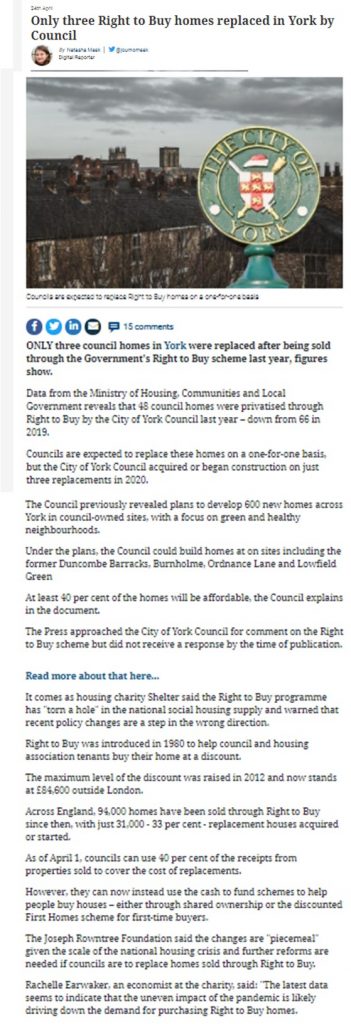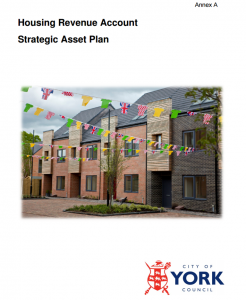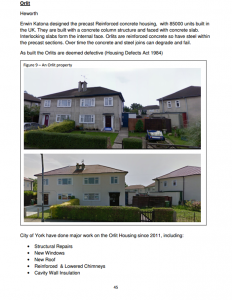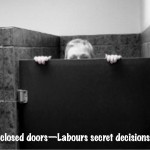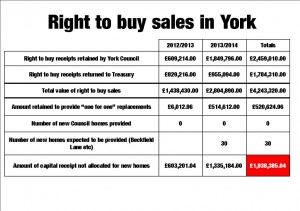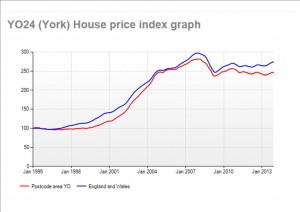But media story on Council house sales was misleading
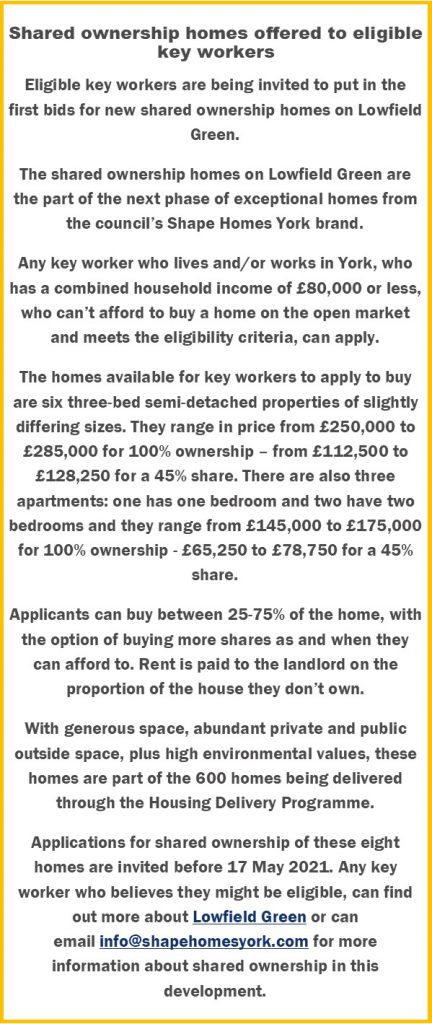
The York Council is offering first refusal to key workers on one of its housing development sites (see box).
They are right to do so.
The eight homes can be reserved by key workers who meet the Government criteria (the definition of which is drawn fairly wide) and who are eligible for the Help To Buy scheme.
The advertising blurb is misleading of course.
There will be no “abundant outside space” at Lowfields as the adjacent playing fields are also being built on. Such open space as is planned, is unlikely to be landscaped for several years as sections of the development, including public service buildings, elderly persons accommodation, communal housing, and playgrounds, have yet to leave the drawing board.
The development has however avoided some of the eccentricities seen elsewhere in the Council’s house building programme.
At Duncombe, and in Burnholme, car parking is restricted to fewer spaces than there are properties, with the Council urging people to use a “cargo bike” to get the weekly shop in!
The change in shopping habits, with more people now shopping on-line, hasn’t been recognised with no delivery lockers included in design specifications.
Similarly, at Lowfields ,the option for purchasers to have a living boundary hedge (rather than a close boarded fence) is still is not on offer.
Still success looks likely against the background of a very buoyant housing market in the city at present. Sales should provide the income necessary to cross subsidise the Council house building element of the programme.
What may irk the Council is misleading stories like the one that appeared in the commercial media on Friday which highlighted that “right to buy” (RTB) sales exceeded the provision of new Council houses last year.
That has been the position virtually every year for half a century with successive governments maintaining the RTB policy.
The only disagreement between the Tories and Labour has been on the level of discounts to be offered.
Against the background caused by the pandemic, there will in any event be some delays in building replacements.
It is only relatively recently, that central government even allowed local authorities to reinvest the sales income to provide replacement properties for rent. The Council started purchasing replacements on the open market as recently as 10 years ago, although even this was resisted by some York Councillors.
We don’t believe that local authorities should be restricted in how much of their RTB receipts they can use to provide replacement homes.
Within the last few days, the government has announced further changes. In future, 40% of right to buy income can be used to provide replacement homes while receipts must be spent within 5 years (rather than 3) .
But the current Council deserves credit for getting the Council house building programme going again.
Providing good quality homes to rent with high insulation values, and hence lower running costs, is a significant step forward
Such progress should be recognised by the media, commentators, and pressure groups.

